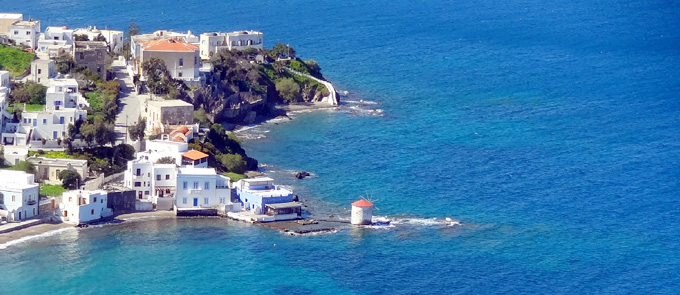Kos
Kos is a Greek island belonging to the Dodecanese archipelago, located in front of the Turkish resort of Bodrum, the ancient Alicarnasso, about 4 km from the coast.
It measures about 50 km in length and 12 km in width in the widest part and there are about 30,000 permanent residents, most of which are concentrated in the homonymous capital of the island.
In addition to the capital Kos, other inhabited areas of the island are Cardamena (Kardamena), Cefalo (Kefalos), Tigaki, Antimachia, Mastichari, Marmari and Pilì (Pyli), in addition to the smaller villages of Zia, Zipari, Platani, Lagoudi and community of Asfendiù (Asfentiou), a center composed of 5 villages now almost completely abandoned at the foot of Mount Dikeo, the highest peak of the island.
On the island there are many archaeological sites such as the Asclepeion, or the temple of Asclepius, Greek god of medicine, the baths, the Platano of Hippocrates, the Roman odeon, the Castle of Neratzia, the fortress at the entrance of the port of the town of Kos and the Byzantine fortress of Antimachia.
For sea lovers there are many beaches to visit. The northern part of the island is always beaten by the wind, but has crystalline seabeds instead of the southern one, with a still calm sea, clear water but darker seabed. Between Kardamena and Coo there are some famous thermal springs that form natural pools of very hot and sulphurous water. Going towards Kefalos is the island of Castri often visited by sunbathers sunbathing on the beach in front.
It was famous in antiquity for being the birthplace of Hippocrates, the father of medicine.

Amorgos (Katapola)
Info on Amorgos Katapola
Amorgos is the easternmost island of the Cyclades archipelago, as well as the one closest to the Dodecanese archipelago, situated to the southeast of Naxos, 138 nautical miles (256 km) from Piraeus. The municipality of Amorgos occupies the island and some nearby islets, the largest of which is the island of Nikouria, and has an area of 126, 346 km2 and a population of 1 973 inhabitants.

Destinations
Offers
Companies
Support
Write us on WhatsAppEmail usEmail usThe booking centre is open from 9 a.m. to 7.30 p.m. and can only be contacted by email or via your user area.










